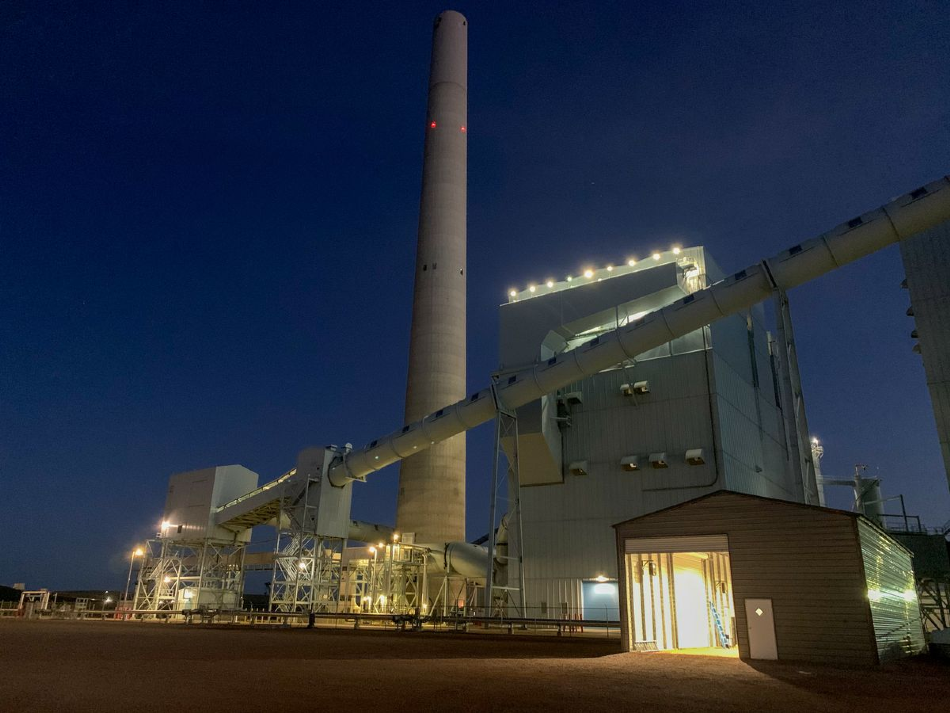Jul 13 2020
The U.S. Department of Energy (DOE) has awarded a two-year, $2 million grant to a team of researchers from the University of California, Los Angeles (UCLA) to support the advancement of a process for converting carbon dioxide emissions into construction materials.
 The technology for producing CO2Concrete is being demonstrated at the Wyoming Integrated Test Center at the Dry Fork Station in Gillette, Wyoming. Image Credit: Gabriel Falzone/UCLA.
The technology for producing CO2Concrete is being demonstrated at the Wyoming Integrated Test Center at the Dry Fork Station in Gillette, Wyoming. Image Credit: Gabriel Falzone/UCLA.
Together with a new funding of $905,000 from UCLA discretionary funds and industry partners, the DOE will advance the study led by Gaurav Sant, a professor of civil and environmental engineering and of materials science and engineering at the UCLA Samueli School of Engineering.
Led by Sant, a research team invented CO2Concrete, a kind of concrete made partially from carbon dioxide emissions—an underlying cause of climate change.
The technology they developed traps carbon dioxide from raw flue gas when it exits cement plants, power plants, and other carbon dioxide producers, thereby minimizing emissions to the atmosphere.
Moreover, the process reduces the use of conventional cement—the binding agent in concrete. The system developed by Sant and his colleagues captures carbon dioxide directly from raw flue gas, thus preventing the high cost involved in carbon dioxide capture.
According to Sant, the product will have a 50%–70% lower carbon footprint when compared to regular concrete used in construction. Cement production leads to over 8% of annual man-made carbon dioxide emissions.
We are very pleased to have the support of the Department of Energy and our industry and philanthropic partners, which alongside the talent of UCLA’s faculty, students and scholars, has been foundational to the work we have been able to accomplish. This support allows the institute to advance its mission to decarbonize heavy industry operations, and to develop better ways to use waste carbon dioxide emissions.
Gaurav Sant, Director, Institute for Carbon Management, University of California, Los Angeles
The initiative by UCLA is one of 11 projects in four areas of interest selected to share about $17 million through the Carbon Utilization Program, awarded by the DOE’s Office of Fossil Energy. The team from UCLA obtained the only award in the area of “production of inorganic materials: maximizing uptake in concrete and cement.”
Moreover, the team is one of five finalists who compete for a $7.5 million prize in the coal track of the NRG COSIA Carbon XPRIZE, which looks for the most practical technology for transforming carbon dioxide emissions into valuable products. (Carbon XPRIZE also includes a different category for entries in a natural gas track).
The final round of competition, which was originally planned for February but delayed owing to the COVID-19 pandemic, started in June, when the UCLA researchers moved to the Wyoming Integrated Test Center to showcase its system on an industrial scale. The test center is part of Dry Fork Station, a coal-based power plant located outside Gillette, Wyoming.
The demonstration, to be performed for 90 days, will generate over 140 metric tons (over 300,000 pounds) of CO2Concrete. A part of the resulting product will be used for small projects on the UCLA campus, and some of it will be contributed for use at construction sites in other places.
Besides other sources of funding, the team from UCLA earlier received $500,000 from the XPRIZE organization after reaching the finals in 2018, a $1.5 million gift in 2017 from the Anthony and Jeanne Pritzker Family Foundation, and a separate $1.8 million grant from the DOE in 2019. In total, the researchers have received over $8 million for the advancement of the CO2Concrete technology.
Moreover, Sant is the founder and CEO of CO2Concrete, a private company located in Santa Fe, New Mexico. The company was founded to commercialize the technology created at UCLA. All philanthropic gifts and research grants to fund the study on the technology are directed to UCLA.
Dante Simonetti, a professor of chemical and biomolecular engineering, and Gabriel Falzone and Iman Mehdipour, staff scientists at the Institute for Carbon Management, are the other members of the UCLA team.